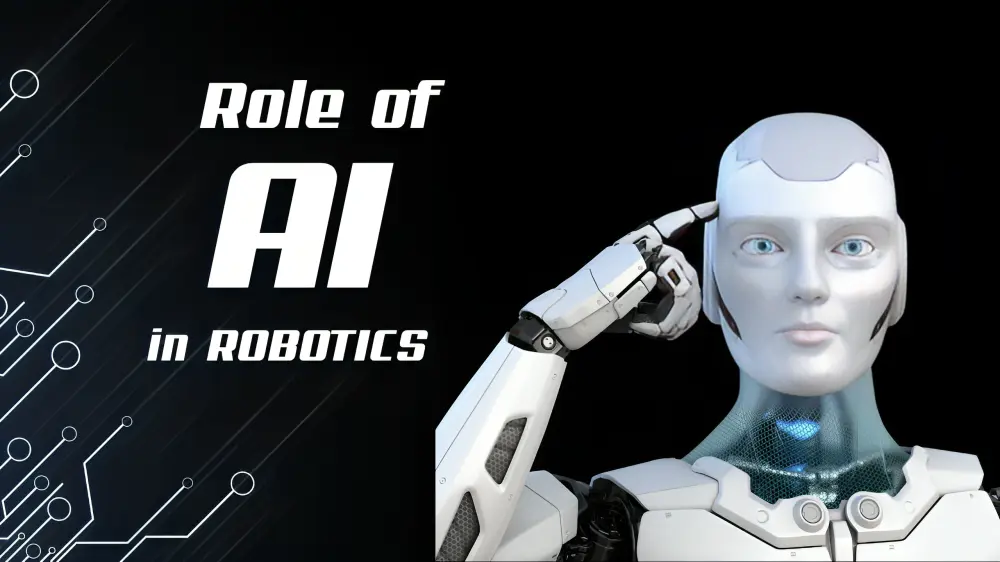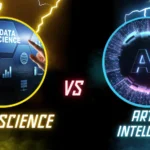When one examines the role of AI in robotics, an incredible story of progress and innovation emerges. This article investigates how artificial intelligence (AI) is transforming the robotics industry and emphasizes AI’s significant impact on a variety of other industries.
What is the role of AI in Robotics?
Artificial intelligence and robotics can nevertheless coexist. While there aren’t many robotics projects utilizing AI, as our AI systems advance, these kinds of designs likely will. These are a few instances of current AI-powered robots.
- Process optimization: Artificial intelligence-enabled robots are made to work more efficiently and with greater accuracy and dependability. The two primary functions of robots are predictive capability and process optimization, but none of these would be feasible without artificial intelligence (AI). Even so, robots with this technology can operate faster and more efficiently, which is important in any field or setting. For instance, in a productive industry, robots are capable of anticipating and identifying issues in real-time due to their technological awareness.
- Sense and respond: Robots can sense their environment and react by utilizing artificial intelligence technologies. Robots have pre-programmed functions for object identification. Robots are equipped with sensors to enable quick detection and task execution according to programming.
- Inspection: With the use of artificial intelligence techniques, the robots’ sensors and machine learning technology can inspect components and identify malfunctions.
- Mobile information Robots: Artificial intelligence robots are capable of carrying out duties similar to those of human service representatives, helping clients and providing answers to their inquiries in a variety of settings, including hotels, shops, and airports.
What is AI ?
The term “artificial intelligence” (AI) refers to a computer program that focuses on creating and analyzing algorithms, suggesting that AI is a program with the ability to create sentient machines.
What is Robotics?
Robotics is a subfield of artificial intelligence technology that brings together computer science, electrical engineering, and mechanical engineering. This field focuses on the creation and operation of mechanized humans. Robotics develops machines that mimic human abilities and perform tasks that humans would do.
Basic Components of Robots
- Sensors
- Actuators
- Muscle wire
- Power Supply
- Ultrasonic motor
- Electronics motor
- Pneumatic air muscles
Application the role of AI in Robotics
- Computer Vision: Thanks to computer vision, one of the most widely used artificial intelligence technologies, robots can see as well. In the fields of health, entertainment, medicine, the military, and mining, computer vision is crucial. Artificial intelligence’s computer vision subfield helps to identify and act upon relevant information extracted from images, videos, and other visual inputs.
- Edge Computing: When it comes to robots, edge computing is defined as a robotics integration, testing, design, and simulation service provider. In robotics, edge computing enhances security protocols, reduces connectivity costs, optimizes data management, and offers a more stable and continuous connection.
- Affective Computing: The study of creating machines that can perceive, comprehend, process, and mimic human emotions is known as affective computing. To give robots human-like abilities for observation, interpretation, and emotional display, it aims to give robots emotional intelligence.
- Industries: In industries, robots serve as critical individual organs that contribute to productivity. These AI machines complete assigned tasks and monitor the entire process.
- Medicine: AI technology was much needed in the medical field. The mechanical artificial intelligence robots are being used in numerous clinical trials. Modern artificial intelligence robots are performing many complex operations, such as brain tumors, etc., demonstrating the advancement in the medical field.
- Entertainment: Over the last ten years, several science fiction films have strengthened the position of the entertainment industry. Artificial intelligence robots abound in science fiction films, highlighting the progress made in the field of entertainment.
- Scientific labs: When AI robots help people in labs conduct delicate scientific experiments, there is less risk to human life. To improve efficiency and result accuracy, well-managed mechanical machines carry out the scientific tests.
Conclusion
Automation and AI work together to transform a wide range of industries. We are seeing previously unheard-of breakthroughs in science labs, entertainment, and medicine alike computer vision, affective computing, and process optimization. Collectively, they usher in a new era of innovation by redefining efficiency and productivity.





